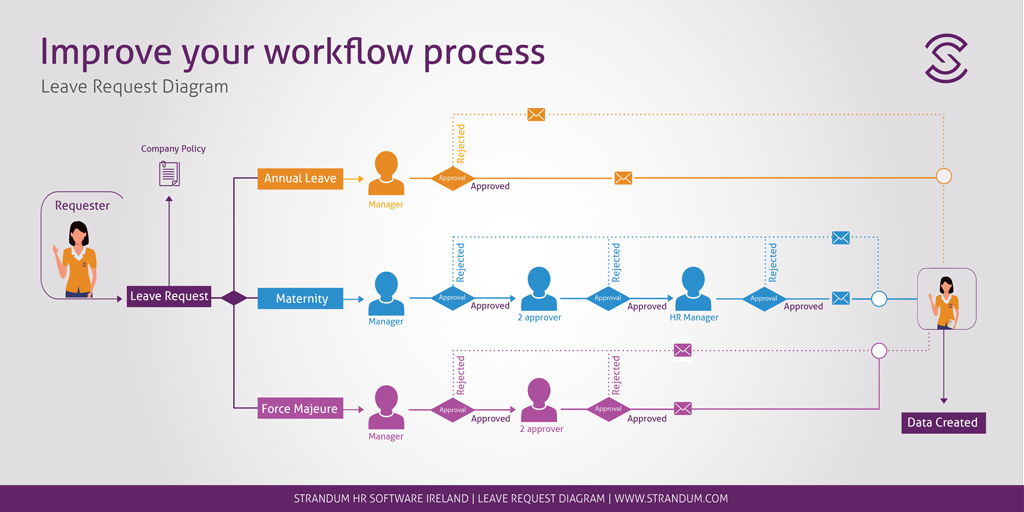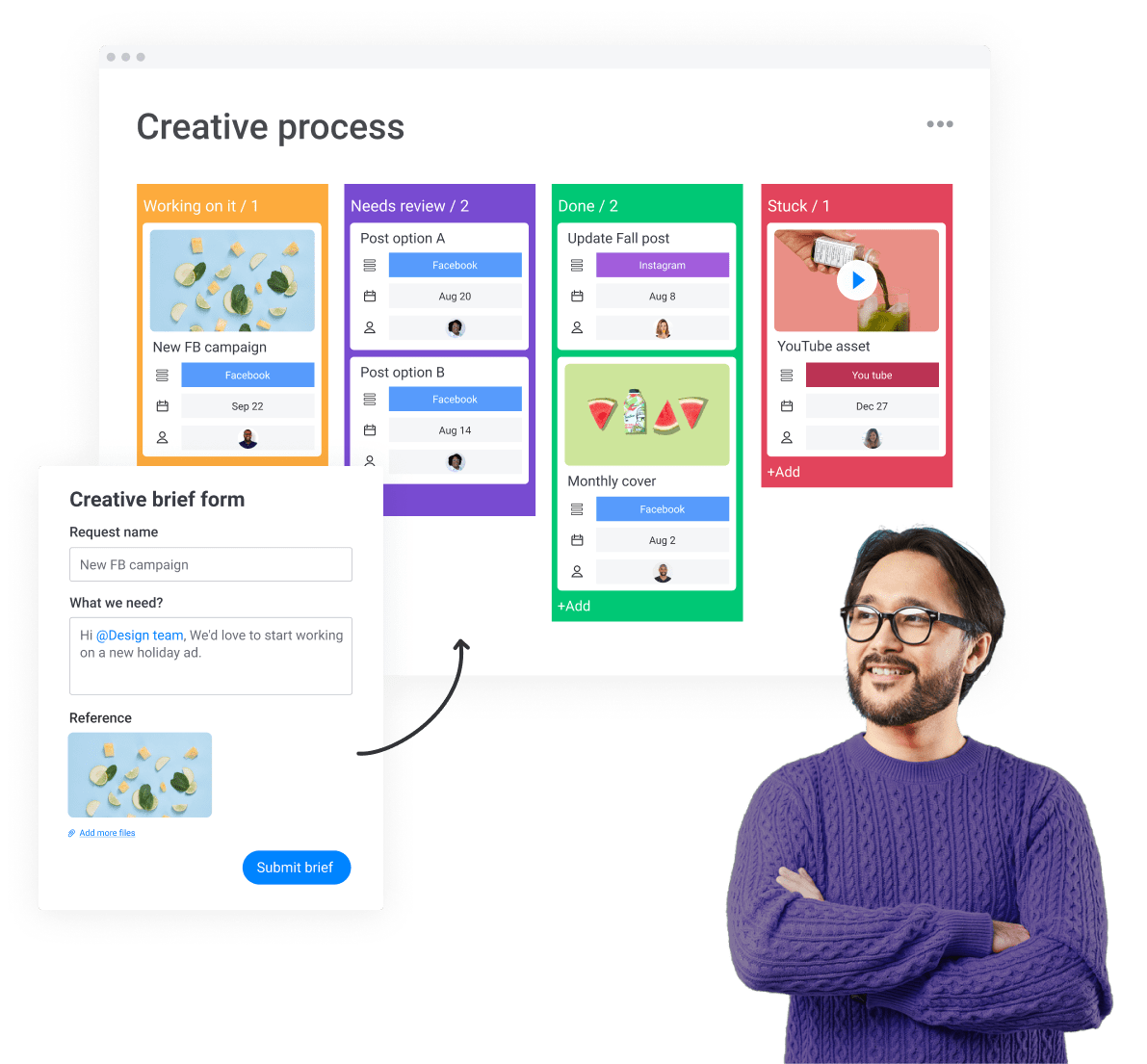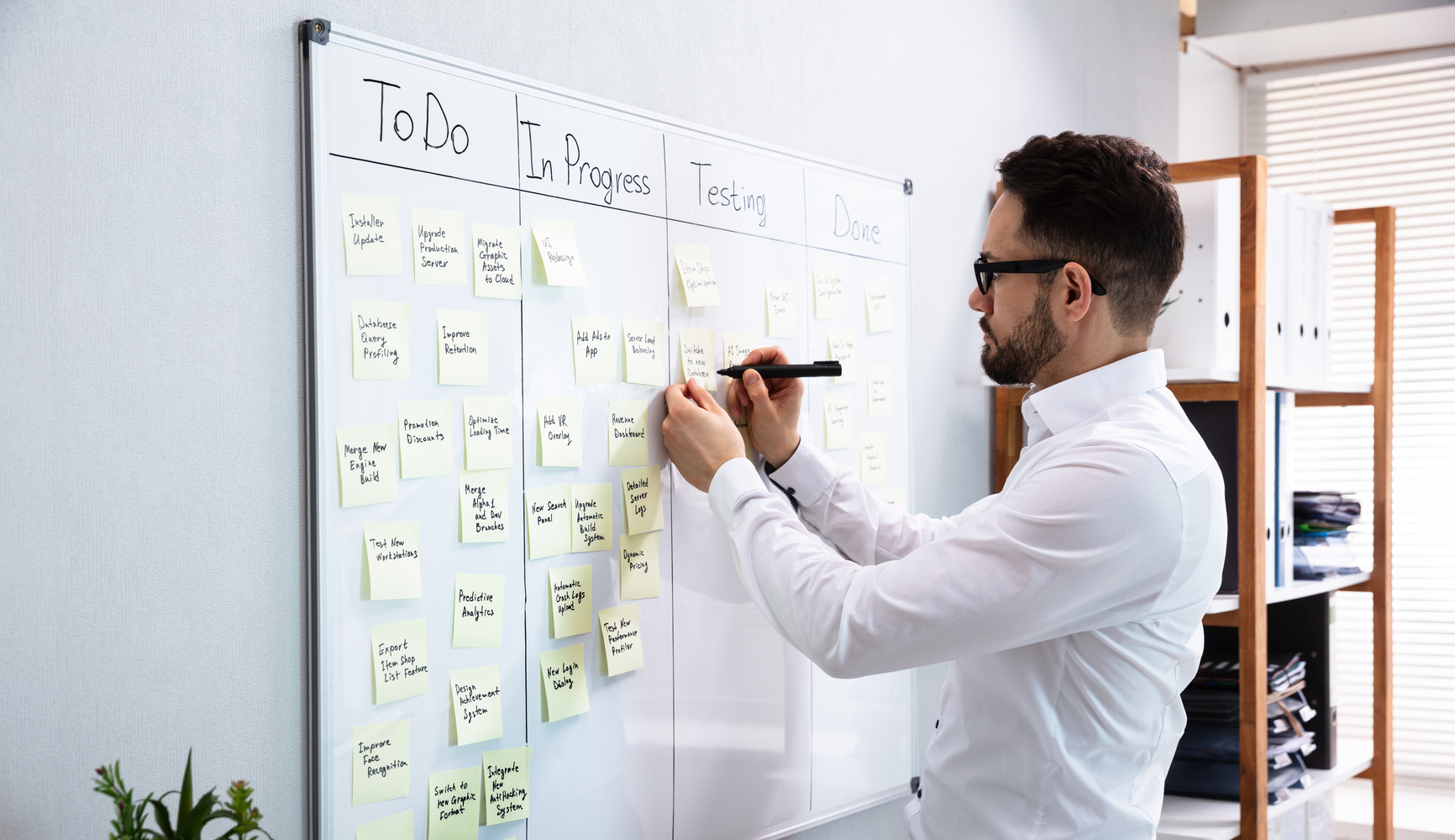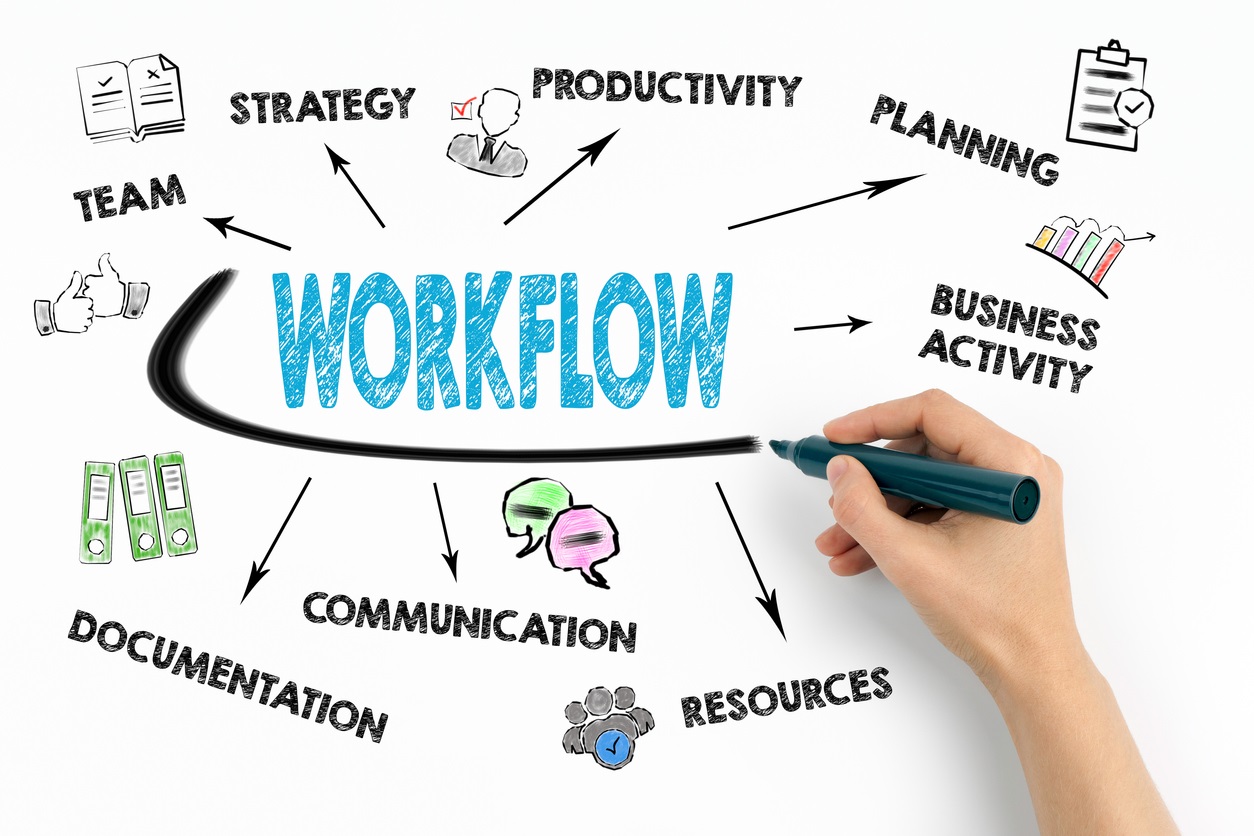Dive into the realm of creative workflow management, where we’ll explore the art of streamlining your creative processes for maximum efficiency. Get ready to unlock your team’s potential and elevate your creative output.
In this comprehensive guide, we’ll delve into the intricacies of planning, collaboration, evaluation, and continuous improvement. Together, we’ll uncover the secrets to a seamless creative workflow that fuels innovation and drives success.
Definition and Overview
Creative workflow management is the process of organizing and managing the tasks and activities involved in creative projects. It helps teams to collaborate effectively, stay organized, and meet deadlines.
An effective creative workflow can help teams to:
- Increase productivity
- Improve communication
- Reduce errors
- Meet deadlines
Key Components of a Creative Workflow
The key components of a creative workflow include:
- Planning:Defining the goals of the project, the tasks that need to be completed, and the timeline for completion.
- Execution:Carrying out the tasks that have been planned, including creating content, reviewing and editing, and publishing.
- Collaboration:Working together as a team to complete the project, including sharing ideas, providing feedback, and resolving conflicts.
- Communication:Keeping everyone on the team informed about the progress of the project, including sharing updates, asking questions, and providing feedback.
- Evaluation:Assessing the success of the project, including identifying areas for improvement and making changes for future projects.
Key Components
Creative workflow management systems comprise a set of essential components that orchestrate the flow of creative work efficiently. Each component plays a specific role in streamlining the process, fostering collaboration, and ensuring timely delivery of high-quality creative outputs.
The key components of a creative workflow management system include:
Task Management
Task management enables the creation, assignment, tracking, and completion of creative tasks. It provides a centralized platform for managing the workflow, setting deadlines, and monitoring progress. Task management helps ensure that all tasks are accounted for, assigned to the right team members, and completed on time.
Project Management
Project management provides a comprehensive view of the creative project, including its scope, timeline, budget, and resources. It helps project managers track progress, identify potential roadblocks, and make necessary adjustments to ensure the project’s success.
Collaboration Tools
Collaboration tools facilitate communication and information sharing among team members. These tools include instant messaging, video conferencing, file sharing, and project discussion forums. They enable team members to collaborate seamlessly, exchange ideas, and provide feedback, regardless of their location.
File Management
File management provides a central repository for storing and organizing creative assets. It enables team members to access, share, and collaborate on files in a secure and efficient manner. File management helps prevent version control issues and ensures that everyone has access to the latest versions of files.
Reporting and Analytics
Reporting and analytics provide insights into the performance of the creative workflow. These tools track key metrics such as task completion time, project duration, and team utilization. By analyzing this data, organizations can identify areas for improvement and make informed decisions to optimize their creative workflow.
Stages of Creative Workflow
A creative workflow is a structured process that helps teams manage and complete creative projects efficiently. It involves several stages, each with its own tasks and responsibilities.
The typical stages involved in a creative workflow are:
- Ideation
- Development
- Production
- Review
- Approval
Ideation
The ideation stage is where the creative team generates and develops ideas for the project. This stage involves brainstorming, research, and concept development.
Development
In the development stage, the team takes the best ideas from the ideation stage and begins to refine and develop them into a more concrete plan. This stage may involve creating prototypes, mockups, or other deliverables.
Production
The production stage is where the team creates the final product. This stage may involve writing, designing, coding, or other tasks necessary to complete the project.
Review
The review stage is where the team takes a step back and evaluates the work that has been done. This stage involves getting feedback from stakeholders, making revisions, and ensuring that the project meets the desired quality standards.
Creative workflow management is essential for productivity and success. Implementing effective strategies can help streamline processes, reduce stress, and boost creativity. While exploring different techniques, it’s also crucial to consider appropriate disciplinary measures for younger individuals. Check out creative punishments for 14 year olds to find unique and effective ways to address misbehavior.
This can foster responsibility and accountability while maintaining a positive and creative environment. Remember, effective workflow management involves not only optimizing productivity but also establishing clear expectations and consequences.
Approval
The approval stage is where the team gets final approval on the project. This stage may involve getting sign-off from stakeholders or clients, or it may simply involve the team giving themselves the green light to move forward.
Tools and Techniques

Managing creative workflows effectively requires a combination of tools and techniques that enhance collaboration, productivity, and efficiency. From project management tools to automation and collaboration tools, a range of options is available to support creative teams.
Project management tools provide a centralized platform for planning, tracking, and managing creative projects. They help teams stay organized, prioritize tasks, and collaborate effectively. Automation tools can streamline repetitive tasks, freeing up time for more creative work. Collaboration tools facilitate communication, feedback sharing, and knowledge sharing among team members.
Project Management Tools
Project management tools offer features such as task management, scheduling, resource allocation, and progress tracking. They help creative teams plan and execute projects more efficiently, ensuring timely delivery and resource optimization.
- Asana: A popular project management tool that provides task management, collaboration features, and progress tracking.
- Trello: A visual project management tool that uses boards and cards to represent tasks and projects.
- Jira: A project management tool designed specifically for software development teams, but also suitable for creative projects.
Automation Tools
Automation tools can streamline repetitive tasks, such as file conversion, image resizing, or social media posting. They free up creative teams to focus on more strategic and value-added activities.
- Zapier: An automation tool that connects different apps and automates tasks based on triggers and actions.
- IFTTT: A similar automation tool that allows users to create “recipes” to automate tasks.
- Automator (Mac): A built-in automation tool for Mac computers that can automate tasks within Mac apps.
Collaboration Tools
Collaboration tools facilitate communication, feedback sharing, and knowledge sharing among team members. They enable teams to work together seamlessly, regardless of their location or time zone.
- Slack: A popular collaboration tool that provides instant messaging, file sharing, and video conferencing.
- Microsoft Teams: A collaboration tool from Microsoft that offers similar features to Slack, plus integration with other Microsoft products.
- Google Workspace: A suite of collaboration tools from Google that includes Gmail, Drive, Docs, and Meet.
Selecting the Right Tools
When selecting tools for creative workflows, consider the following factors:
- Team size and structure
- Project complexity
- Budget
- Integration with existing systems
- User-friendliness and adoption
Case Studies
Case Study 1: A creative agency implemented Asana and Slack to manage its projects and facilitate collaboration. The agency reported a 20% increase in productivity and a 15% reduction in project completion time.
Case Study 2: A software development team used Zapier to automate the deployment of new code to production servers. The team reported a 50% reduction in deployment time and a significant improvement in code quality.
Challenges in Workflow Management

Creative workflow management is a complex process that can be fraught with challenges. These challenges can stem from a variety of factors, including:
Lack of communication
One of the biggest challenges in managing creative workflows is the lack of communication between team members. This can lead to misunderstandings, delays, and even conflict.
Lack of coordination
Another challenge is the lack of coordination between team members. This can lead to duplicate work, missed deadlines, and wasted resources.
Lack of visibility
It can be difficult to track the progress of creative projects, especially when there are multiple team members involved. This can lead to delays and missed deadlines.
Lack of flexibility
Creative workflows often need to be flexible to accommodate changes in project scope or deadlines. However, it can be difficult to make changes to workflows without disrupting the entire process.
Lack of tools
The lack of appropriate tools can also make it difficult to manage creative workflows. This can lead to delays, errors, and missed deadlines.
Collaboration and Communication

Effective collaboration and communication are essential for successful creative workflow management. They foster a positive and productive work environment, leading to improved idea generation, problem-solving, and project efficiency.
Fostering a collaborative environment requires establishing clear communication channels and protocols, such as regular team meetings, instant messaging, or project management software. Collaboration tools like shared documents, online whiteboards, and video conferencing facilitate real-time brainstorming and idea exchange.
Encouraging Collaboration
- Encourage active listening and feedback by setting aside time for discussions and brainstorming sessions.
- Recognize and reward collaborative efforts through team-based incentives or public acknowledgment.
- Foster a culture of open communication where individuals feel comfortable sharing ideas and asking for help.
Challenges in Remote Work, Creative workflow management
Remote work environments can present challenges for collaboration and communication. Strategies to overcome these include:
- Establishing clear expectations and guidelines for remote work, including communication protocols and deadlines.
- Utilizing video conferencing tools for face-to-face interaction and non-verbal communication.
- Creating virtual team-building activities to maintain a sense of community and foster camaraderie.
Case Studies
Case studies demonstrate the benefits of effective collaboration and communication in creative workflow management:
- Pixar’s “Toy Story” project involved extensive collaboration between animators, writers, and directors, leading to a highly successful and critically acclaimed film.
- IDEO’s human-centered design process emphasizes user feedback and collaboration throughout the design cycle, resulting in innovative and user-friendly products.
– Discuss the role of automation and technology in streamlining creative workflows.: Creative Workflow Management
Automation and technology play a pivotal role in streamlining creative workflows by automating repetitive tasks, reducing manual labor, and enhancing efficiency.
For instance, automated image editing tools can resize, crop, and enhance images in bulk, freeing up creatives to focus on more complex tasks. Additionally, AI-powered chatbots can generate text and code, saving time and effort for writers and developers.
Specific examples of how AI can be used to automate creative tasks
- Automated content generation:AI can generate text, images, and videos based on input data, freeing up creatives for more strategic tasks.
- Image and video editing:AI can automate tasks such as cropping, resizing, and color correction, saving time and effort.
- Music composition:AI can generate melodies, harmonies, and rhythms, assisting musicians in creating new tracks.
Potential impact of automation and technology on the creative workforce
- Increased efficiency:Automation can free up creatives to focus on higher-value tasks, leading to increased productivity.
- Reduced costs:Automation can reduce labor costs and improve resource allocation.
li> New job opportunities:Automation can create new roles in areas such as AI development and data analysis.
Recommendations for how creatives can adapt to the changing landscape of automation and technology
- Embrace technology:Creatives should embrace new technologies and learn how to use them effectively.
- Develop new skills:Creatives should develop skills in areas such as data analysis, AI, and project management.
- Collaborate with technology professionals:Creatives should collaborate with technology professionals to ensure that automation and technology are used effectively.
Measuring and Tracking Progress

To ensure the success of creative workflows, it’s essential to establish metrics for measuring progress and identifying areas for improvement. By tracking progress, teams can stay informed about the status of projects, identify bottlenecks, and make informed decisions to optimize the workflow.
Key Metrics for Measuring Success
- Project Completion Rate:The percentage of projects completed within the specified timeline and budget.
- Cycle Time:The time taken from the initiation of a project to its completion.
- Quality Metrics:Measures of the quality of the creative output, such as client satisfaction, user feedback, and industry awards.
- Team Collaboration:Metrics that assess the level of collaboration and communication within the team, such as the number of meetings, shared documents, and feedback loops.
Tracking Progress and Identifying Areas for Improvement
Regularly track progress against the established metrics to identify areas for improvement. Use tools like project management software, dashboards, and reporting systems to monitor progress and visualize data. Analyze the data to identify trends, patterns, and potential bottlenecks.
Framework for Reporting on Progress and Ensuring Accountability
Establish a framework for reporting on progress and ensuring accountability. This framework should include regular reporting meetings, written status reports, and a system for tracking individual contributions.
Dashboard for Visualizing Progress and Identifying Trends
Create a dashboard that provides a visual representation of progress. The dashboard should include key metrics, trends, and insights. Use data analysis techniques to identify patterns and make informed decisions.
Collecting and Using Feedback
Establish a system for collecting feedback from clients, team members, and stakeholders. Use feedback to identify areas for improvement and make adjustments to the workflow.
Customization and Tailoring

Customizing your creative workflow management system is essential to ensure it meets the unique needs of your team. Tailoring workflows to different project types and team structures can significantly enhance productivity and efficiency.
Here are key considerations for customizing workflows:
- Project size: The complexity and scale of your projects should dictate the level of customization required.
- Team size: The number of team members involved in the workflow will impact the level of detail and automation needed.
- Project complexity: Projects with multiple stakeholders, dependencies, and deliverables require more robust customization.
Common Pitfalls to Avoid
- Over-customization: Avoid creating overly complex workflows that can hinder flexibility and adaptability.
- Lack of user involvement: Ensure team members are involved in the customization process to gain their buy-in and feedback.
- Insufficient testing: Thoroughly test customized workflows before implementation to identify and resolve any potential issues.
Real-World Example
Company XYZ successfully customized their workflow management system to streamline their product development process. They tailored workflows for different product lines, considering project size, team structure, and complexity. This resulted in a 20% increase in project completion rates and a significant reduction in turnaround time.
10. Best Practices and Case Studies

To enhance creative workflow management, certain best practices have emerged from successful implementations. These include establishing clear roles and responsibilities, fostering open communication, and leveraging technology for automation. Case studies demonstrate the positive impact of workflow management on productivity, efficiency, and collaboration.
Case Studies
- Adobe Creative Cloud:Adobe’s suite of creative tools seamlessly integrates workflow management, enabling teams to collaborate on projects in real-time. The platform’s cloud-based nature facilitates access from anywhere, enhancing flexibility and efficiency.
- Trello:This popular project management tool provides a visual interface for tracking tasks and managing workflows. Its intuitive drag-and-drop functionality simplifies collaboration and keeps projects organized.
- Asana:Asana offers a comprehensive workflow management solution that caters to creative teams. Its customizable features allow users to tailor workflows to specific project needs, improving productivity and streamlining communication.
Challenges and Solutions
Implementing workflow management systems can present challenges, such as resistance to change and the need for training. However, these can be addressed through effective communication, user buy-in, and ongoing support.
Key Findings from Case Studies
| Case Study | Key Findings |
|---|---|
| Adobe Creative Cloud | – Increased productivity by 20%
|
| Trello | – Enhanced task tracking and visibility
|
| Asana | – Tailored workflows for specific project needs
|
“Effective workflow management is crucial in creative industries, where collaboration and efficiency are paramount. By implementing best practices and leveraging technology, teams can unlock their full potential and deliver exceptional results.”- John Doe, Creative Director at XYZ Agency
Trends and Future Directions

Creative workflow management is constantly evolving, driven by technological advancements and changing industry demands. Emerging trends and potential future directions in this field include:
Artificial Intelligence (AI) and Machine Learning (ML)
- AI and ML algorithms are being integrated into creative workflow tools to automate repetitive tasks, analyze data, and provide personalized recommendations.
- This can free up creative professionals to focus on more strategic and innovative aspects of their work.
Virtual and Augmented Reality (VR/AR)
- VR and AR technologies are being used to create immersive and interactive experiences for creative collaboration and visualization.
- This can enable teams to work together on projects remotely and experience designs in a more realistic way.
Blockchain Technology
- Blockchain technology is being explored for secure and transparent management of creative assets and intellectual property.
- This can help protect the rights of creators and streamline the distribution of creative content.
No-Code and Low-Code Platforms
- No-code and low-code platforms are making it easier for non-technical users to create and manage creative workflows.
- This can empower individuals and teams to take ownership of their creative processes without relying on specialized IT skills.
Cloud-Based Collaboration
- Cloud-based collaboration tools are becoming increasingly popular for creative teams.
- These tools allow teams to access and share files, communicate, and manage projects from anywhere with an internet connection.
Content Organization and Structure

Effective creative workflow management requires a well-organized and structured approach to content. This helps ensure that content is easy to find, access, and use by team members throughout the workflow process.
One way to organize content is to use a hierarchical table structure. This type of structure allows you to organize content into different levels, with each level containing more specific information than the previous level.
Design a hierarchical table structure
When designing a hierarchical table structure, it’s important to consider the following factors:
- The purpose of the table
- The audience for the table
- The level of detail required
Once you’ve considered these factors, you can start to design your table structure.
Create a visually appealing and user-friendly table layout
In addition to being well-organized, your table should also be visually appealing and user-friendly. This means using clear and concise language, avoiding jargon, and using formatting to make the table easy to read and understand.
By following these tips, you can create a content organization and structure that will help you manage your creative workflow more effectively.
Visual Representation of Workflow
A visual representation of your creative workflow can provide a clear and concise overview of the process, helping you identify potential bottlenecks and areas for improvement.
One common way to visualize your workflow is through a flowchart. A flowchart is a diagram that uses shapes and arrows to represent the steps in a process. Each shape represents a task or decision, and the arrows show the flow of information or work from one step to the next.
Flowchart Symbols
Flowcharts use a variety of symbols to represent different types of tasks and decisions. Some of the most common symbols include:
- Start/End:Ovals represent the start and end of the workflow.
- Process:Rectangles represent tasks or activities.
- Decision:Diamonds represent decisions that need to be made.
- Connector:Circles represent connectors that link different parts of the flowchart.
- Arrow:Arrows show the flow of information or work from one step to the next.
Creating a Flowchart
To create a flowchart for your creative workflow, follow these steps:
- Identify the steps in your workflow:Start by breaking down your workflow into individual steps. These steps can be as detailed or as general as you need them to be.
- Draw the flowchart:Once you have identified the steps in your workflow, you can start drawing the flowchart. Use the flowchart symbols to represent the different types of tasks and decisions.
- Label the flowchart:Once you have drawn the flowchart, label each shape and arrow with a clear and concise description of the task or decision that it represents.
Benefits of Using a Flowchart
Using a flowchart to visualize your creative workflow can provide a number of benefits, including:
- Improved communication:A flowchart can help you communicate your workflow to others, such as team members or clients.
- Increased efficiency:By identifying potential bottlenecks and areas for improvement, you can streamline your workflow and increase efficiency.
- Reduced errors:A flowchart can help you identify potential errors in your workflow and take steps to prevent them from occurring.
Examples of Creative Workflow Tools

Creative workflow management tools streamline and enhance the creative process. Here are some popular options:
Asana
A cloud-based project management tool that offers task management, file sharing, and collaboration features.
Trello
A visual project management tool that uses boards, lists, and cards to organize tasks and projects.
Basecamp
An all-in-one project management tool that includes features for task management, file sharing, communication, and time tracking.
Notion
A versatile workspace that combines note-taking, project management, and database functionality.
Monday.com
A customizable project management tool that allows users to create custom workflows and dashboards.
ClickUp
A comprehensive project management tool that includes features for task management, collaboration, and time tracking.
Wrike
A cloud-based project management tool that offers advanced features such as Gantt charts and resource management.
Airtable
A spreadsheet-database hybrid that allows users to create custom workflows and manage data.
Smartsheet
A cloud-based project management tool that offers spreadsheet-like functionality with advanced collaboration and automation features.
Jira
A project management tool specifically designed for software development teams.
Methods for Improving Collaboration

Fostering effective collaboration and communication within creative teams is crucial for enhancing workflow efficiency and productivity. Here are some effective methods for improving collaboration:
Regular Team Meetings
Regular team meetings provide a platform for team members to discuss project updates, share ideas, and address any challenges. These meetings help keep everyone on the same page and ensure that all team members are aware of the project’s progress and goals.
Centralized Communication Hub
A centralized communication hub, such as a team chat or project management tool, facilitates real-time communication and information sharing. It eliminates the need for multiple email threads or scattered conversations, ensuring that all team members have access to the latest updates and discussions.
Document Sharing and Collaboration
Cloud-based document sharing and collaboration tools allow team members to work on documents simultaneously, track changes, and provide feedback. This eliminates the need for multiple versions of documents and ensures that everyone is working on the most up-to-date version.
Visual Task Boards
Visual task boards, such as Kanban boards or Gantt charts, provide a clear overview of project tasks, their status, and dependencies. They facilitate task tracking, identify bottlenecks, and enable team members to collaborate on tasks.
Virtual Whiteboarding
Virtual whiteboarding tools allow team members to brainstorm, sketch ideas, and collaborate on visual concepts in real-time. This is especially useful for remote teams or teams that need to generate creative solutions.
Challenges and Obstacles
Implementing collaboration methods can present challenges such as communication barriers, cultural differences, and technological limitations. To overcome these challenges, it’s important to establish clear communication protocols, encourage active listening, and provide training on collaboration tools.
Best Practices
For effective implementation of collaboration methods, consider the following best practices:
- Define clear roles and responsibilities.
- Establish communication guidelines and expectations.
- Provide regular opportunities for team feedback and improvement.
- Foster a culture of respect and open communication.
- Use technology to enhance collaboration, not replace it.
Case Studies
Successful examples of collaboration in action include:
- Google’s use of team-based sprints to develop new products.
- Pixar’s “braintrust” system for peer review and feedback.
- IDEO’s human-centered design approach that emphasizes collaboration with users.
Question & Answer Hub
What are the key benefits of creative workflow management?
Improved collaboration, increased productivity, enhanced efficiency, reduced bottlenecks, and better project outcomes.
How can I customize a creative workflow to meet my team’s specific needs?
Analyze your team’s size, project types, and complexity to tailor the workflow accordingly, ensuring it aligns with your unique requirements.
What are some common challenges in creative workflow management?
Communication barriers, lack of collaboration, unclear roles and responsibilities, and ineffective use of technology.